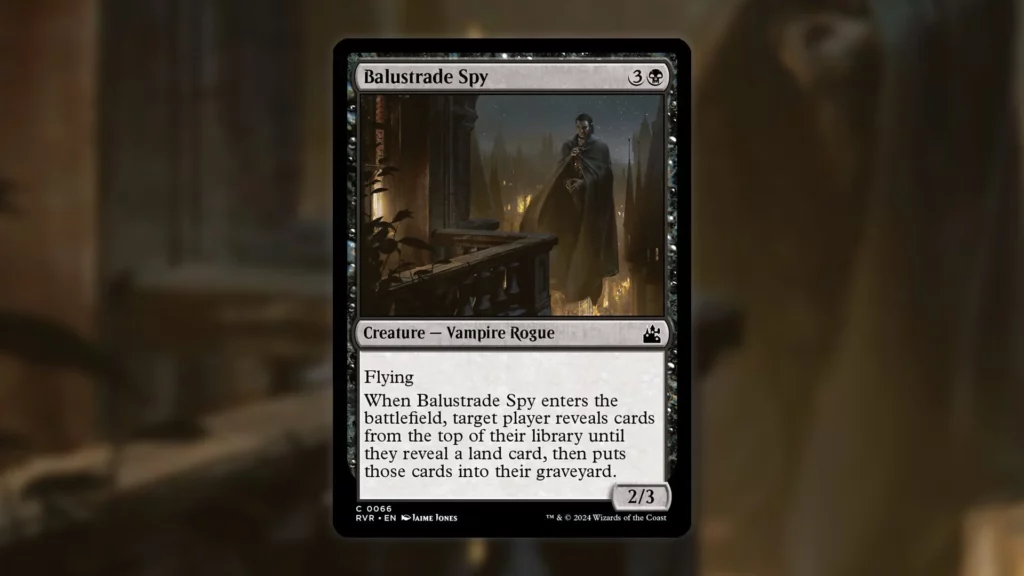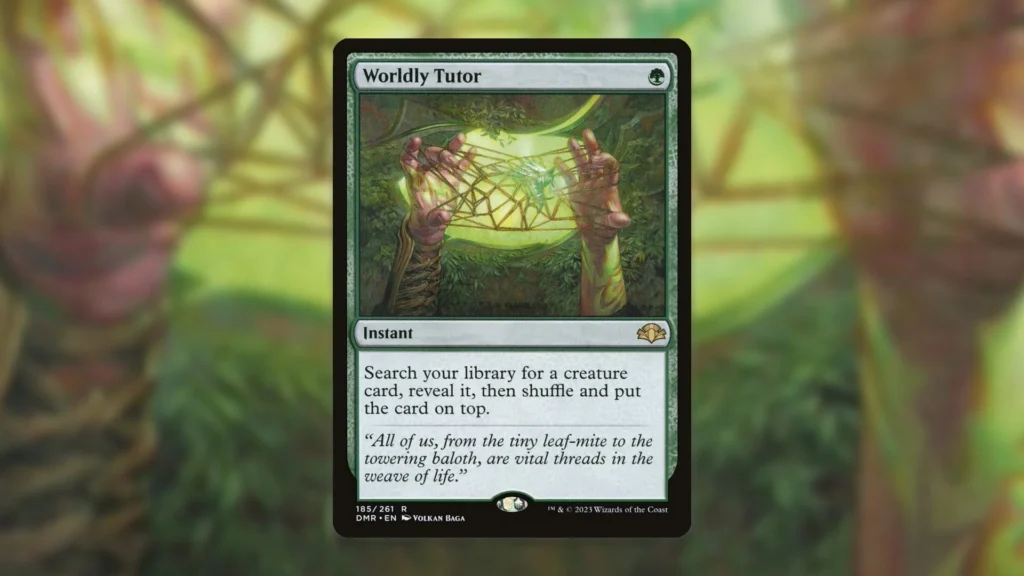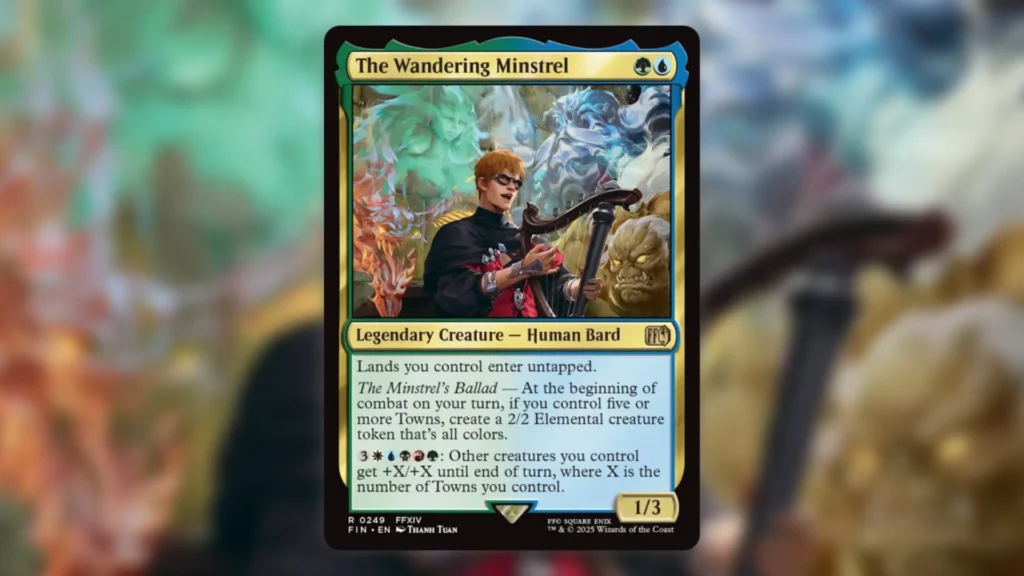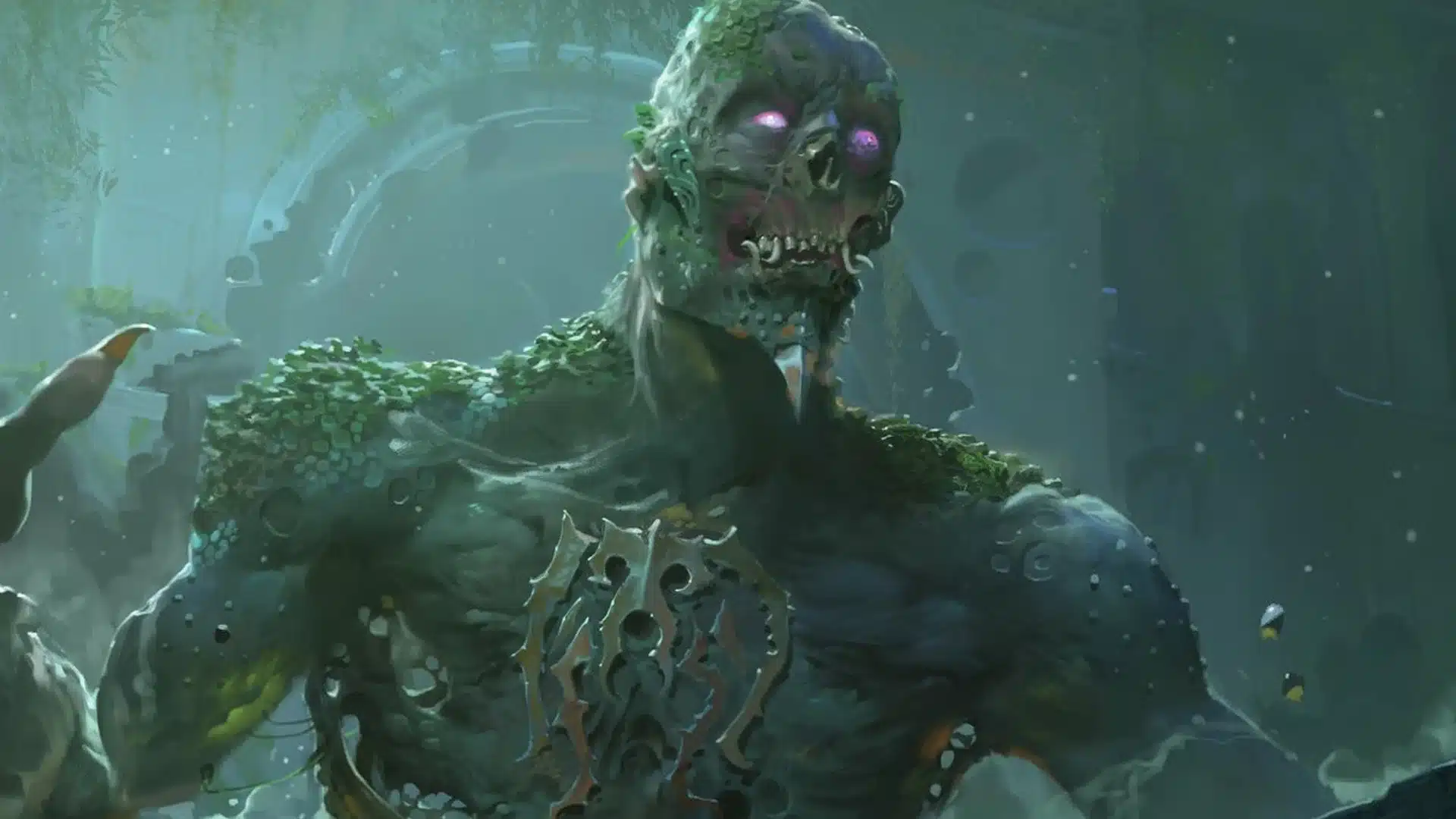Since the release of Final Fantasy MTG, we’ve seen The Wandering Minstrel have a major impact across multiple formats. A cheap creature that lets your lands enter untapped that’s easy to tutor for is a big deal for Amulet Titan decks in Modern and Scapeshift combo decks in Pioneer alike.
Now, we’re even seeing the card make a splash in Duel Commander. In this surging 100-card Singleton competitive format, MTG player Xenowan won a recent Trial event with five-color Oops! All Spells, claiming that The Wandering Minstrel was a big Commander upgrade. Let’s dive in and see what this deck is all about and what The Wandering Minstrel brings to the table.
Oops! All Spells in Duel Commander

As is common with Oops! All Spells decks in other formats like Legacy, this deck features a whopping zero lands. Instead, you’ll find a slew of modal double-faced cards that allow you to hit your “land drops” without messing with your gameplan.
Your main gameplan revolves around a few different win conditions. The first way to close the game is to resolve and activate Goblin Charbelcher. Because you have no actual lands in your deck, activating Goblin Charbelcher will allow you to reveal your entire deck, dealing damage equal to the number of cards in your deck to your opponent.
In addition to Goblin Charbelcher, you can also close games with Balustrade Spy or Undercity Informer. Rather than outright dealing lethal damage, these two cards let you mill your entire library for the low price of four mana.
From there, you can often win the game thanks to the power of Dread Return, using cards like Narcomoeba and Fatestitcher to set up flashing back the powerful sorcery. Thassa’s Oracle is banned, but even just reanimating Lotleth Giant will usually do the trick.
Tons of Tutors

What makes the Duel Commander version of Oops! All Spells unique is that you only get to run one copy of each of your primary win conditions. In order to find your combo pieces reliably, this deck utilizes a large number of tutors.
Obviously, elite options like Demonic Tutor make the cut. Wishclaw Talisman does a good Demonic Tutor impression as well. The downside associated with Wishclaw Talisman is mitigated as long as you can win the game the same turn you activate it.
Other narrow tutors like Worldly Tutor and Sylvan Tutor make an appearance, helping you set up Balustrade Spy and Undercity Informer. As a five-color deck, you have access to all the tutor under the sun, including Bring to Light.
You’ll even find some unorthodox tutors, such as Dimir House Guard, which can be Transmuted to find Balustrade Spy or Goblin Charbelcher. All these options help make your gameplan much more consistent than it might look initially.
Ramp and Disruption

The rest of the deck is made up mostly of cards that fall into one of two categories: ramp or disruption. Ramp serves an important purpose, helping you race fast aggro draws and opposing combo shells.
Your simplest options in this department are your two-mana rocks. Arcane Signet, Coldsteel Heart, a bunch of Talismans, and more all show up in the decklist. Other options like Lotus Bloom and Mox Tantalite can help you set up an easy turn-four kill if you have them in your opening hand.
Tinder Wall, Elvish Spirit Guide, and other one-time effects set up your most explosive draws. You can even tutor for these cards with Summoner’s Pact if you’re confident you can win on the same turn.
Of course, your opponent could have access to interaction of their own. That’s why you need plenty of disruptive elements to make sure the coast is clear. Efficient discard spells like Grief and Thoughtseize are essential versus Lier, Disciple of the Drowned shells with lots of Counterspells. Pact of Negation is another great tool to force through your combo cards.
The Role of The Wandering Minstrel

Ultimately, while all of these tools have been available for players to use, the five-color Oops! All Spells archetype hasn’t been dominant by any stretch. The strategy is cohesive, but most five-color Commanders don’t do a great job furthering your gameplan.
The closest five-color option available prior to the release of Final Fantasy MTG was Esika, God of the Tree. Esika does tap for mana, which comes in handy in games where you need to set up your combo in a timely manner.
However, The Wandering Minstrel is a pretty solid upgrade for a few reasons. First and foremost, a huge percentage of the modal double-faced cards come into play tapped if you play them as a land. The Wandering Minstrel ensures you’ll get access to your mana right away.
As a two-drop, The Wandering Minstrel is more efficient and can thus come down a turn early. On top of setting up your mana nicely on subsequent turns, The Wandering Minstrel serves as a solid blocker against mono-red Zurgo Bellstriker decks and other aggro shells.
The effect The Wandering Minstrel provides is still somewhat minimal in the grand scheme of things, but you aren’t reliant on your Commander to end games. The upside this new legend provides in the early turns is a big boost for Oops! All Spells, so expect to see the deck pop up more following such a strong performance.
Stick with us here at mtgrocks.com: the best site for Magic: The Gathering coverage!

